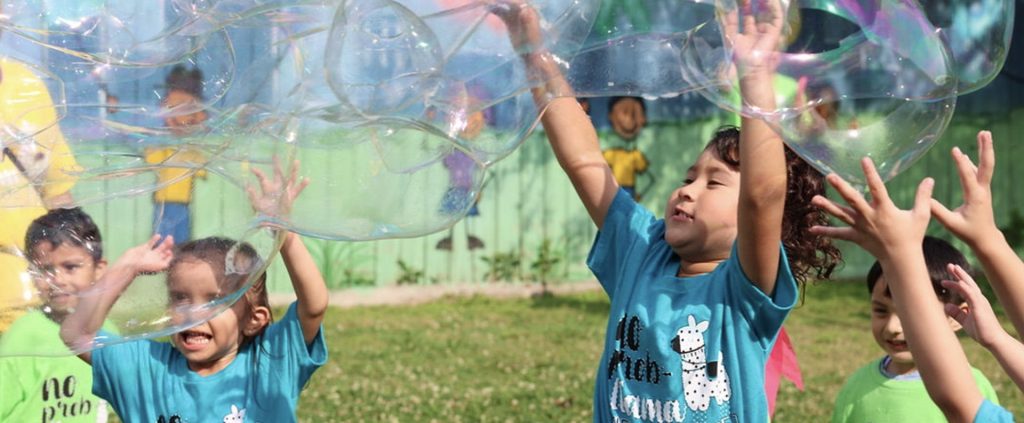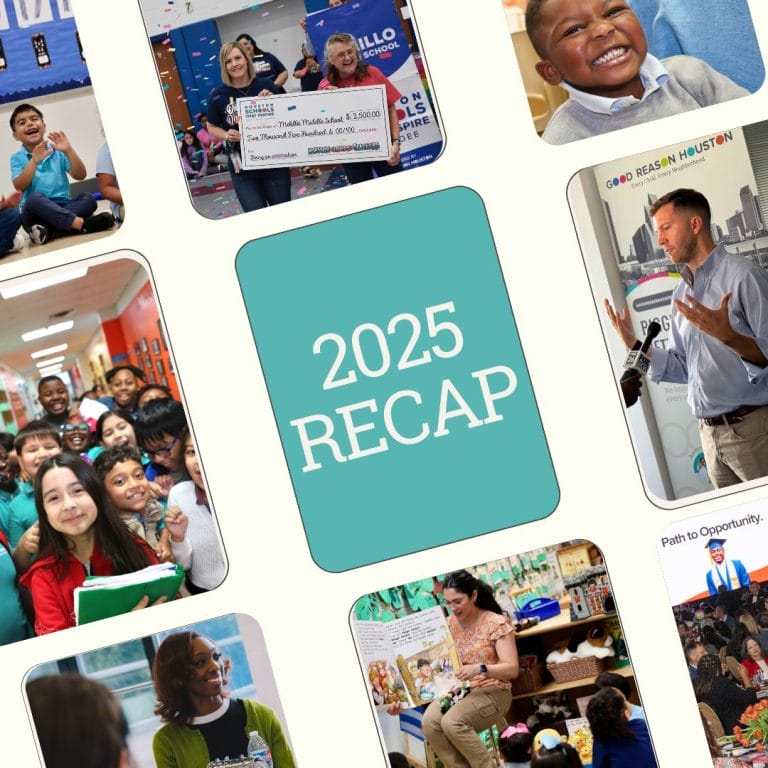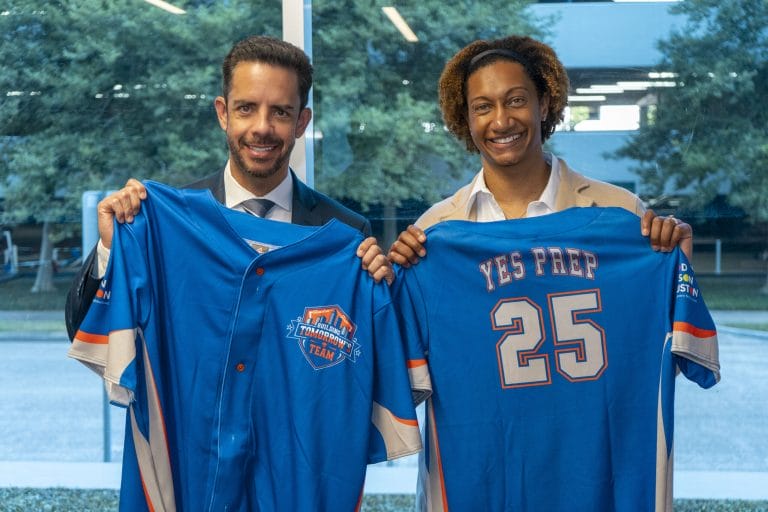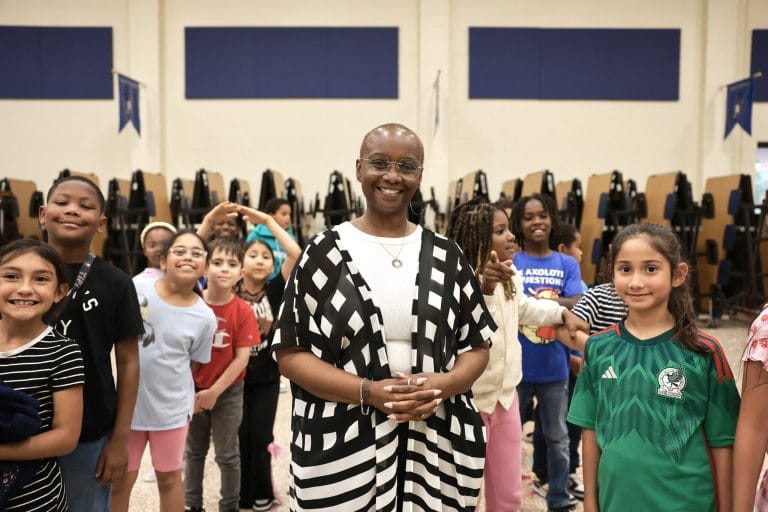
Amidst the clatter of lunch trays, the “tap,tap,tap” of pencils making beats on tables for children to rhyme to, and the sound of belly aching laughter, Ms. Tarsen stood, silently observing the bustling cafeteria scene. Ms. Tarsen smiled watching her students’ personalities come to life. Sixth-grade students exchanged stories from the weekend, compared notes about the most recent episode of a popular anime, and made various adolescent attempts at being entertaining. There was unabashed joy across the room, in every corner except where the teachers stood.
A slow wave of uneasiness filled Ms. Tarsen as she watched her teammates whisper and grumble among themselves. Their brows furrowed in disapproval, her colleagues exchanged knowing glances as they whispered about the “chaos” unfolding before them. Twice, a teacher signaled for the room to be silent and gave the students a noise warning. By the end of the day, one complained to the Dean of Students that “if the students could not keep the noise level down and be more orderly, then they would lose their talking privileges.
Imagine thinking that expressing yourself is a privilege, that the sound of your joy, is a frustration to others.
The Dean, in response, agreed to implement silent lunches to curb excessive noise and disruption.
As she watched her students’ faces in reaction to the announcement the next day, Ms. Tarsen couldn’t shake the feeling that something deeper was at play. She understood the importance of maintaining order in the school environment, but she couldn’t ignore how this response punished age-appropriate behavior, behavior that endangered no one, and all because it annoyed the adults in the room.
In her heart, Ms. Tarsen knew that the laughter, the banter, and the exuberance of her students were not signs of defiance or disrespect but displays of authentic joy and community. The students were learning how to be in community through play. Yet, in a system that often equates discipline with silence and conformity, she questioned whether the new policy was an attempt to enforce reasonable social expectations or a subtle form of stifling Black expressions of joy and play.
DISALLOWING BLACK STUDENT PLAY
All children benefit from routines and predictability, and pedagogical studies of play in classrooms across ages support a positive correlation between play and student learning. Despite the undeniable importance of play, imagination, and music in nurturing young minds, many educational institutions serving lower socio-economic communities of color lean towards rigid discipline. Black students are often disproportionately disciplined. Studies show that implicit bias against Black students in the school system starts as early as PreK.
A study done by the Yale Child Study Center on implicit bias against PreK students found that, “Staff tend to observe more closely black boys when challenging behaviors are expected” even when there was no previous history of misbehavior by that child.
Armed with implicit biases, educators can mistake expressions of joy as defiance and disobedience, which can lead to the creation of policies and codes of conduct that eliminate spaces for play and freedom of expression for Black children. This rule-based attempt at controlling the bodies, volume, and behavior of Black students is frequently based on the belief that Black children “need discipline,” perpetuating harmful stereotypes and contributing to the disproportionate punishment of Black students.
“Black bodies are policed in the streets and in the classroom … [Research] demonstrates that black boys are viewed as four and five years older than they are. Research demonstrates that racial disparities in school discipline exist in the most subjective of categories – ‘willful defiance’, ‘insubordination’, ‘disrespect’. Those racial disparities decrease significantly for the most objective of categories…”
These policies, practices, and punishments that hide under the guise of “discipline” often serve to eliminating play for Black students, robbing them of opportunities for joy and self-expression, it deprives them of a vital component of effective learning pedagogy.
Imposing overly punitive rules on Black children in schools not only stifles creativity and expression but also hinders academic progress and contributes to a culture of low expectations. Research indicates that rigid discipline and the suppression of play can have profound negative impacts on child development and learning outcomes. By constraining Black students’ exuberance and curiosity, these rules create barriers to engagement and inhibit the development of critical thinking skills, ultimately undermining their academic success.
PLAY AS PEDAGOGY
Decades of research have shown us that play is a fundamental building block for cognitive development. It stimulates imagination, fosters problem-solving skills, and nurtures critical thinking. Educational approaches integrating academic rigor with creative play are the foundation of a holistic learning experience vital for a child’s success. Beyond academics, play also plays a crucial role in social and emotional development by providing children with opportunities to navigate social interactions, develop empathy, and regulate their emotions.
“Black Art in various forms has long been used by people in the African Diaspora to promote Black joy and Pro-Blackness yet it is often not included in language and literacy early childhood pedagogies to uplift Black children in North American schools.”
As students age, Black play and expression is sometimes mislabeled in the school environment as defiance, a refusal to conform to social norms. However, it could be asserted that all children continue using play to find and test boundaries, deepen or repair relationships, and express individuality and resilience—all age-appropriate behaviors. While conformity may seem orderly, it often fails to teach essential life skills like self-regulation. In contrast, environments that celebrate creative expression empower students to navigate challenges authentically and make informed decisions.
PLAY AS A TOOL FOR EQUITY
As educators attempt to confront race-based educational disparities, we should examine our support of play and Black joy at school. Play-based learning can be a powerful equalizer, allowing all children to thrive regardless of their socioeconomic background.
By promoting play as an equity tool, educators can break down systemic barriers and foster inclusive learning environments. Prioritizing play-based learning helps develop crucial skills like creativity, critical thinking, and collaboration for all students. Valuing play as a fundamental part of education signals that schools are safe spaces where children can be themselves. Intentional support for play fosters a sense of belonging and empowerment, paving the way for greater equity and opportunity in education.
Recognizing cultural markers of play is crucial for teachers to create inclusive and culturally responsive learning environments. Teachers who lean on unsophisticated, stereotypical interpretations of Black behavior overlook or misinterpret these markers, leading to misunderstandings and missed opportunities for connection with students.
For example, a teacher might misinterpret lively conversation and physical movement as disorderly or aggressive. Similarly, teachers may dismiss certain forms of play, cultural traditions, or communication styles as irrelevant or inferior, further marginalizing students whose backgrounds differ from their own.
To address these challenges, educators must engage in ongoing self-reflection and professional development to expand their cultural competence and awareness. By actively seeking to understand and appreciate their students’ diverse cultural perspectives and play traditions, teachers can create more inclusive and equitable learning environments where all students feel valued and supported.
CULTIVATING ENVIRONMENTS for PLAY
As educators committed to equity and inclusion, we must actively cultivate environments where Black students feel seen, heard, and valued. In practical terms, this means we must seek out, cultivate, and include classroom strategies where Black joy can thrive through play, creativity, and a culturally relevant curriculum.
Some strategies include:
- Embrace play and creativity. Recognize the value of play in learning and allow space for students to express themselves creatively. Incorporate hands-on activities, group projects, and interactive games that engage students’ imaginations and foster collaboration.
- Addressing Individual Implicit Bias: Educators should examine their own biases and work to challenge and disrupt stereotypes and assumptions about Black students. This can involve reflective practices, such as journaling or participating in affinity groups, to explore personal biases and develop strategies for addressing them.
- Creating a Community Culture of Continuous Learning and Reflection: Campus leadership should foster a campus-wide culture where learning and self reflection thrive. This includes regularly evaluating policies, practices, and curriculum for equity and making adjustments as needed to better address any baked in implicit biases.
- Cultivate and Model Positive Relationships: Educators should aim to build strong relationships with students based on trust, respect, and understanding and should and should show genuine care and interest in each student on a human level. The more you know your students, the more you understand their intentions. Beyond forging stronger relationships with students, educators should foster positive, joyful, and uplifting relationships with their peers in order to model the process to students.
- Create Brave Spaces: Establish spaces within the school where Black students can gather, express themselves, and support one another without judgment. This could be a dedicated room or designated times during the day for culturally affirming activities where students can come together in community to understand and sharpen each other
- Incorporate culturally relevant curriculum. Integrate literature, music, and history that reflect the diverse experiences of Black students. Provide opportunities for students to explore and celebrate their identities through meaningful learning experiences.
Embracing Black joy and play isn’t just about creating a more inclusive classroom environment. It is a form of resistance against the oppressive forces that seek to diminish the voices and experiences of Black students. As educators, parents, and community members we are responsible for challenging the status quo and creating spaces where all students feel seen, heard, and valued. By celebrating Black joy daily, we empower our students and reaffirm their worth and dignity as individuals.




